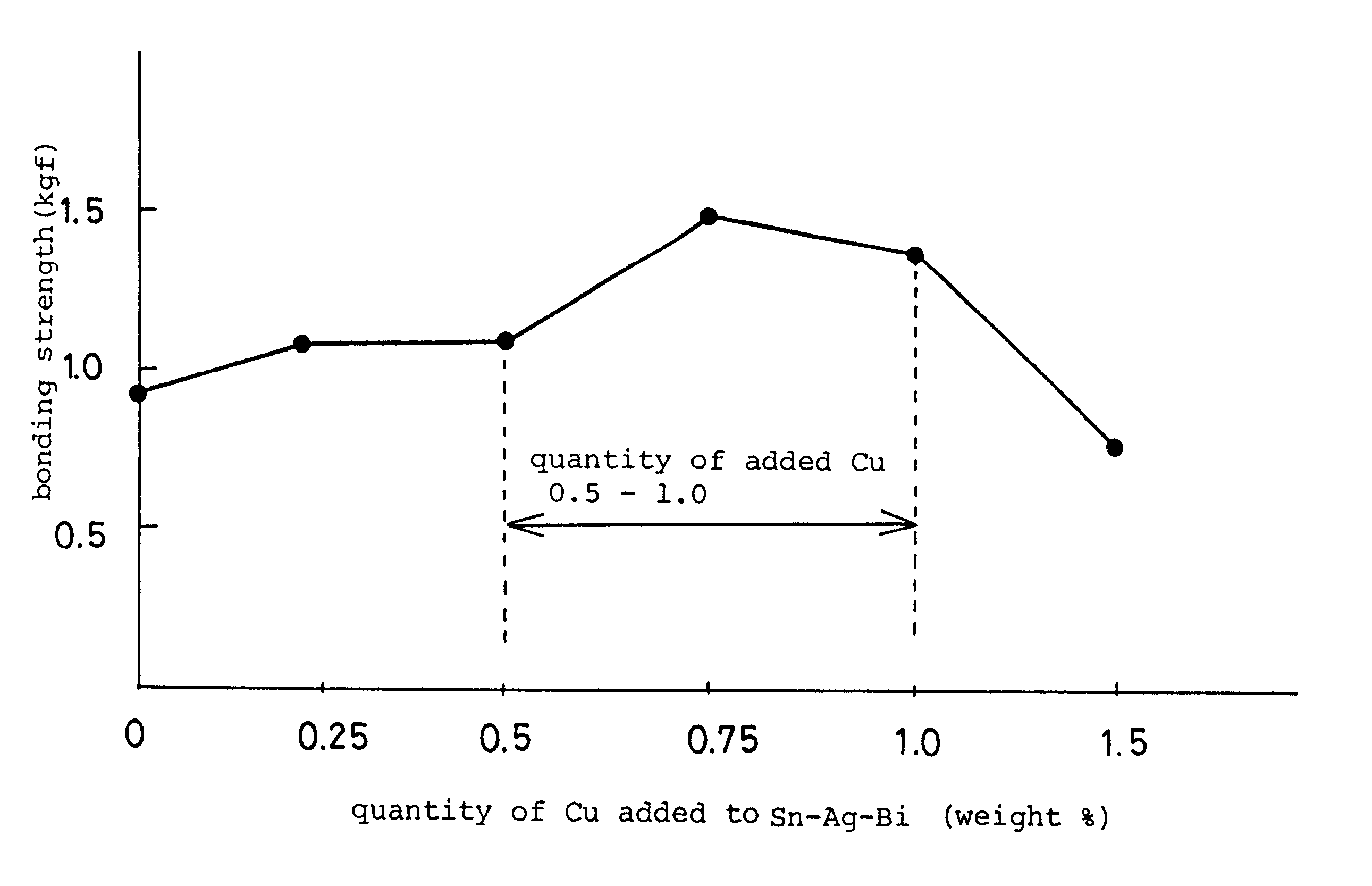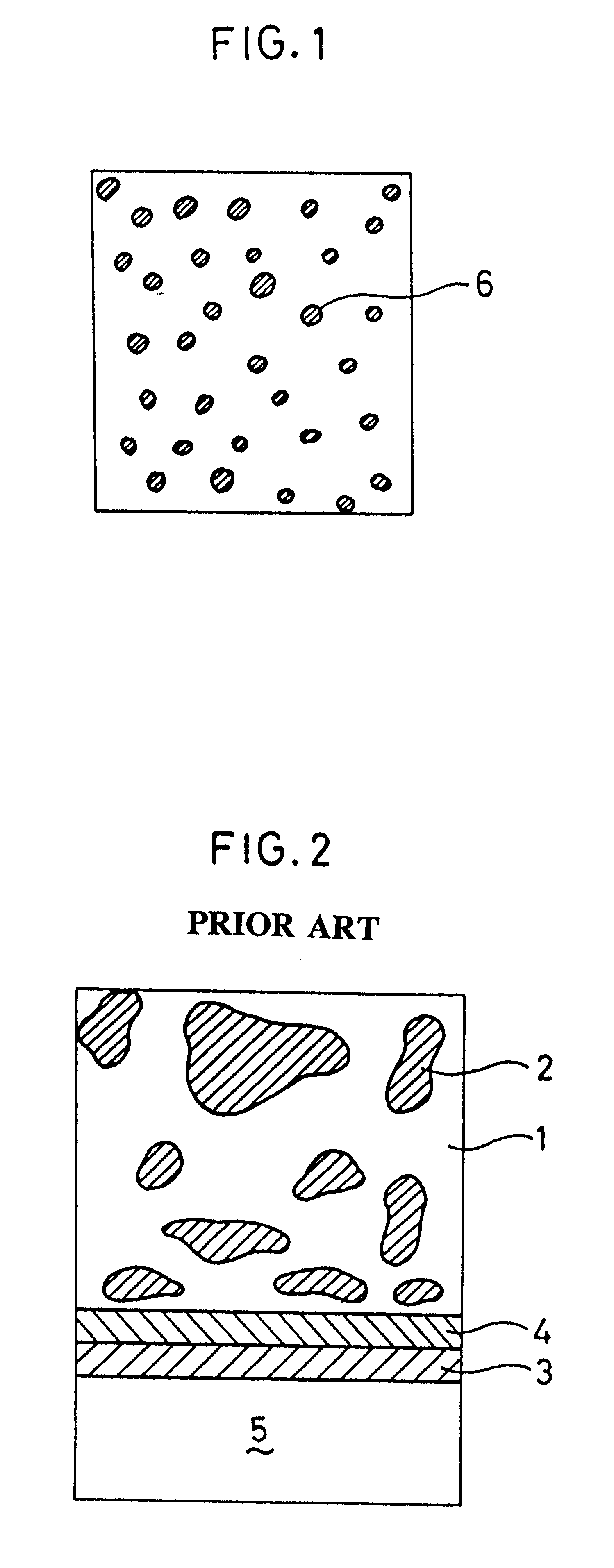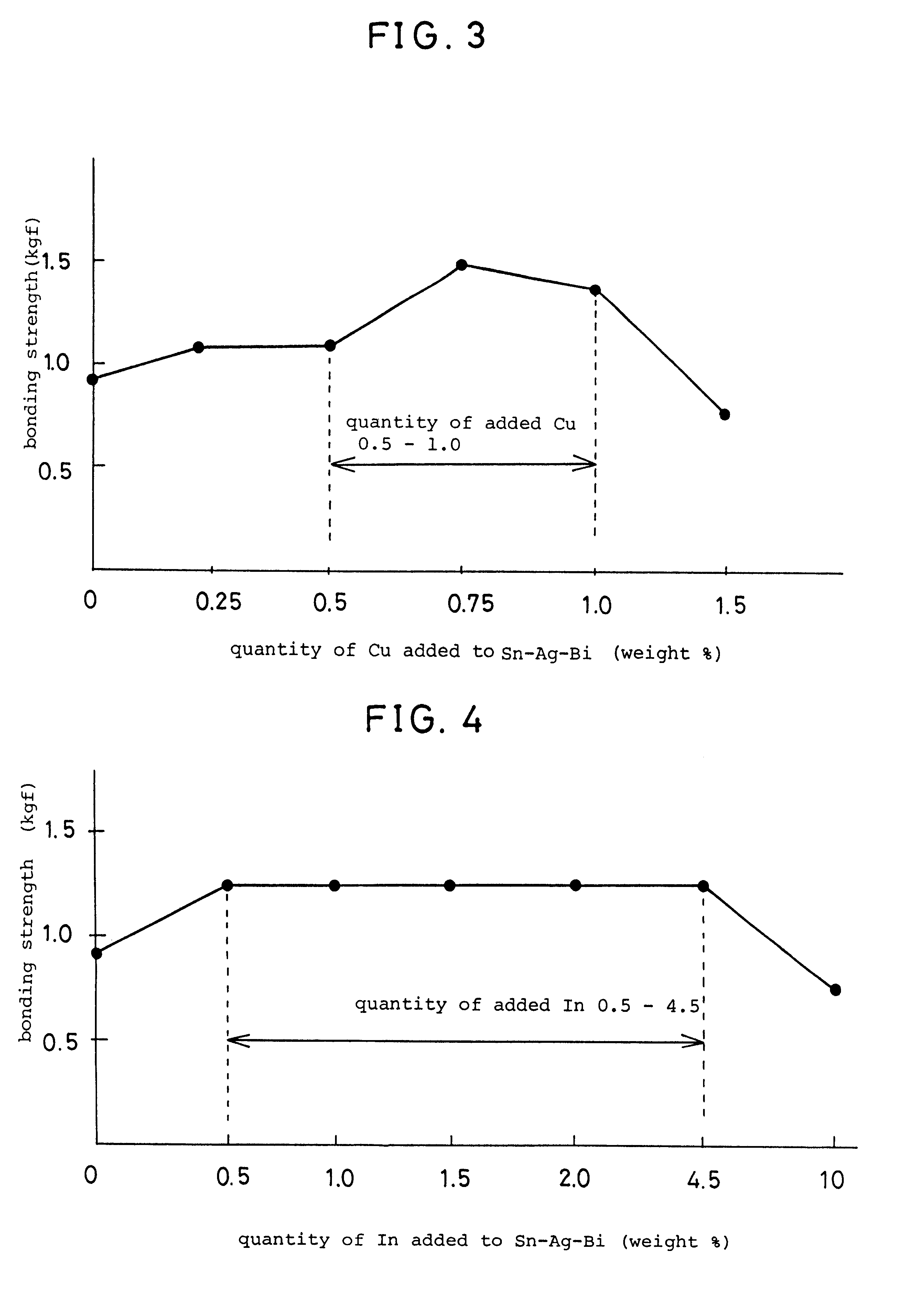Soldering alloy, cream solder and soldering method
a soldering method and alloy technology, applied in the field of soldering materials, can solve the problems of soldering cracks, cracks to be formed in the interface, soldering to be stressed, etc., and achieve excellent thermal fatigue resistance and minimize the effect of the change of components with the passage of time at high temperatures
- Summary
- Abstract
- Description
- Claims
- Application Information
AI Technical Summary
Benefits of technology
Problems solved by technology
Method used
Image
Examples
example 1
The soldering alloy of Example 1 is composed of three components: 90.5 weight % of Sn, 3.5 weight % of Ag, and 6 weight % of Bi.
The soldering alloy was made into a cream solder by adding thereto the RMA type flux for use in air. Then, the melting point, wettability, bonding strength and thermal shock resistance tests were conducted on the cream solder. The results appear in Table 1. A tensile strength test was conducted also, and it was determined that the solder of Example 1 has a tensile strength of 8.3 kgf / mm.sup.2. When compared with Comparative Example 2 having a tensile strength of 6.5 kgf / mm.sup.2, it can be seen that the solder of Example 1 has a remarkably improved tensile strength.
Subsequently, the solder was quench solidified using a soldering solidifying process. As a result, as shown in FIG. 1, intermetallic compounds (Ag.sup.3 Sn) 6 were restrained from growing and finely dispersed. Moreover, it was possible to increase the mechanical strength and to improve the therma...
example 2
Example 2 is a soldering alloy composed of the following five components: 85.5 weight % of Sn, 3 weight % of Ag, 10 weight % of Bi, 0.5 weight % of Cu and 1 weight % of In.
The test results are summarized in Table 1. Example 2 shows improvement over the soldering alloy of Example 1 in that the melting point is lowered and the bonding strength is increased.
The soldering alloy of Example 2 was also quench solidified when it was soldered. As a result, further improvement was observed with respect to both mechanical strength and thermal fatigue resistance.
example 3
Example 3 is a soldering alloy composed of the following five components: 80.5 weight % of Sn, 3 weight % of Ag, 15 weight % of Bi, 0.5 weight % of Cu and 1 weight % of In.
The quantity of Bi in the alloy of Example 3 was greater than in the alloy of Example 2. As a result, as shown in Table 1, the melting point was remarkably lowered.
The soldering alloy of Example 3 was also quench solidified when it was soldered. As a result, still further improvement was observed with respect to both mechanical strength and thermal fatigue resistance.
As can be seen from the above, adding a small quantity of Ag to a solder of the present invention that contains Sn as a main component gives a soldering alloy with a fine alloy structure, an alloy that is subjected to minimized structural changes and has an excellent thermal fatigue resistance.
Also, adding a small quantity of Bi can lower the melting point and improve the wettability of the alloy.
Further, addition of a small quantity of Cu makes it po...
PUM
| Property | Measurement | Unit |
|---|---|---|
| melting point | aaaaa | aaaaa |
| temperature | aaaaa | aaaaa |
| temperature | aaaaa | aaaaa |
Abstract
Description
Claims
Application Information
 Login to View More
Login to View More - R&D
- Intellectual Property
- Life Sciences
- Materials
- Tech Scout
- Unparalleled Data Quality
- Higher Quality Content
- 60% Fewer Hallucinations
Browse by: Latest US Patents, China's latest patents, Technical Efficacy Thesaurus, Application Domain, Technology Topic, Popular Technical Reports.
© 2025 PatSnap. All rights reserved.Legal|Privacy policy|Modern Slavery Act Transparency Statement|Sitemap|About US| Contact US: help@patsnap.com



